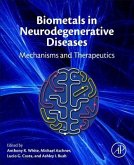Alzheimer''s disease is the leading cause of dementia
in the elderly. Mitochondrial dysfunction is a
prominent and early feature of the disease, although
the reason for this is unclear. Mitochondrial
function is highly dependent on mitochondria
morphology which is regulated by mitochondria
fission and fusion proteins. In this
study, we found disease-related changes in
mitochondrial morphology and distribution as well as
changes in expression levels and distribution of
mitochondrial fission and fusion proteins.
Interestingly, functional protein changes mimicking
that found in AD, are correlated with similar changes
in mitochondrial morphology and distribution to that
observed in AD. We further demonstrated that ROS or
amyloid- are likely the potential pathogenic factor
that causes an impaired balance of mitochondrial
fission/fusion, mitochondria dysfunction and even
synaptic abnormalities. Taken together, this is the
first study to show that ROS or amyloid- might
induce mitochondria dynamic abnormalities in
mitochondria, mitochondrial dysfunction and further
neuronal dysfunction through their different effect
on mitochondrial fission and fusion proteins.
in the elderly. Mitochondrial dysfunction is a
prominent and early feature of the disease, although
the reason for this is unclear. Mitochondrial
function is highly dependent on mitochondria
morphology which is regulated by mitochondria
fission and fusion proteins. In this
study, we found disease-related changes in
mitochondrial morphology and distribution as well as
changes in expression levels and distribution of
mitochondrial fission and fusion proteins.
Interestingly, functional protein changes mimicking
that found in AD, are correlated with similar changes
in mitochondrial morphology and distribution to that
observed in AD. We further demonstrated that ROS or
amyloid- are likely the potential pathogenic factor
that causes an impaired balance of mitochondrial
fission/fusion, mitochondria dysfunction and even
synaptic abnormalities. Taken together, this is the
first study to show that ROS or amyloid- might
induce mitochondria dynamic abnormalities in
mitochondria, mitochondrial dysfunction and further
neuronal dysfunction through their different effect
on mitochondrial fission and fusion proteins.








